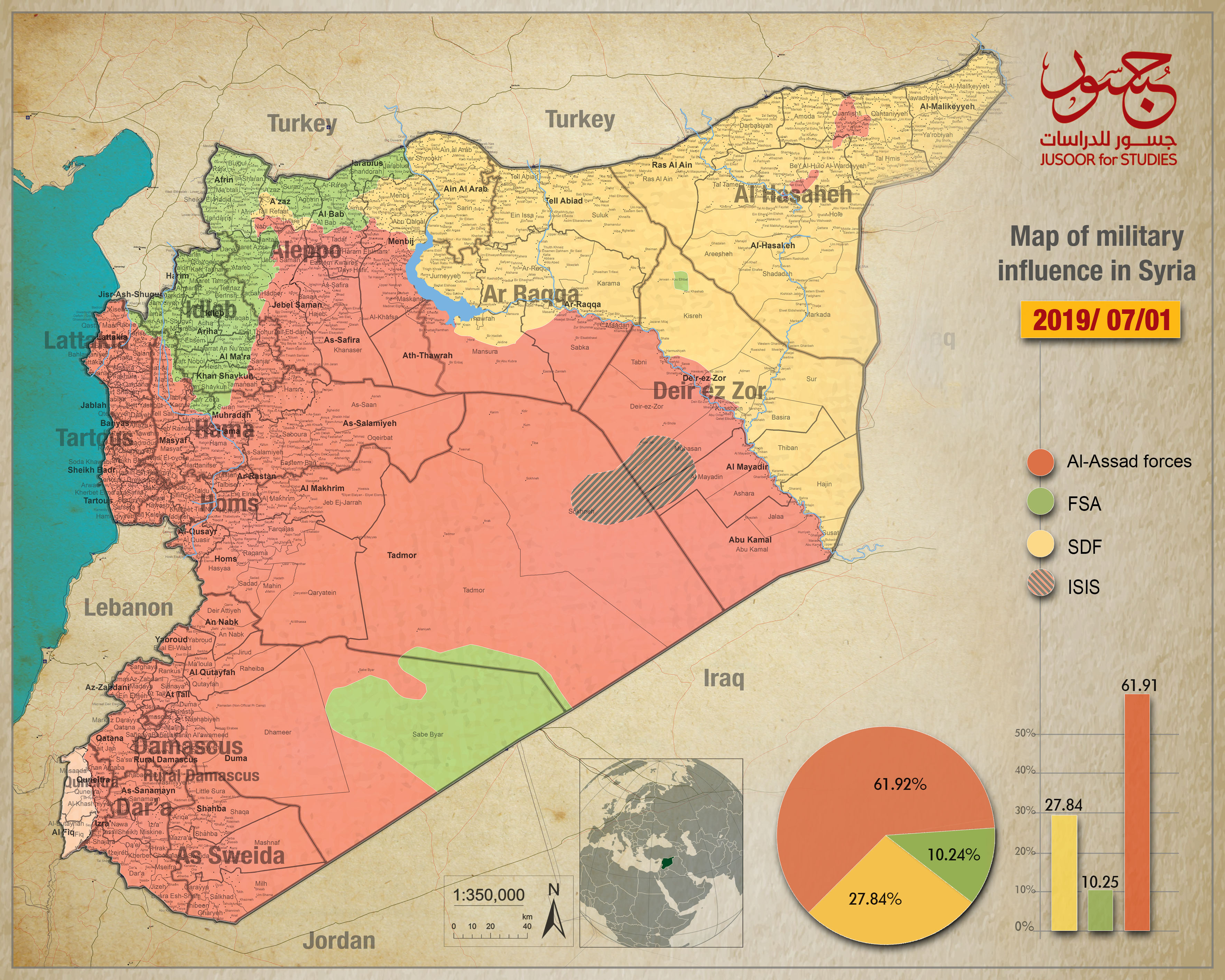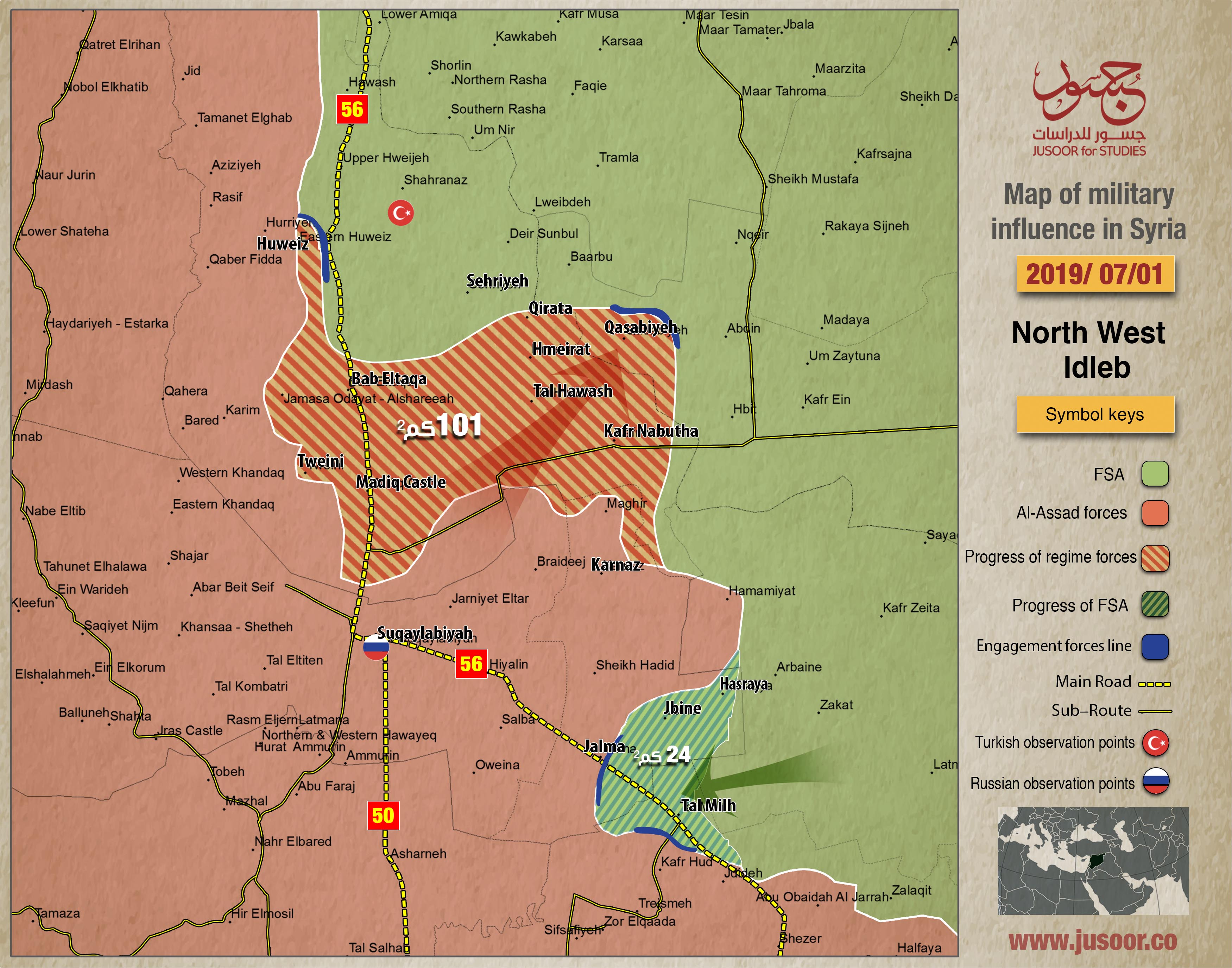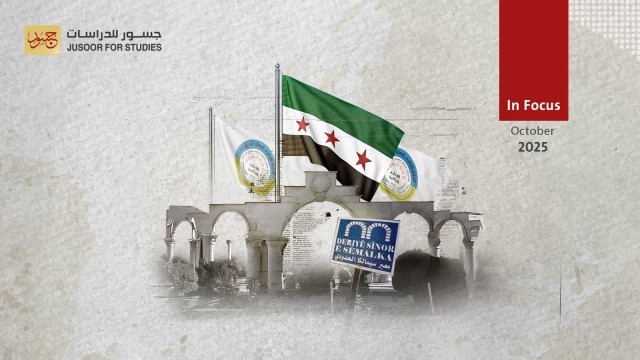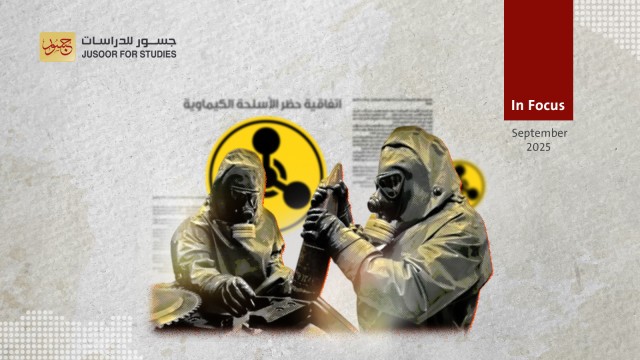Map of military influence in Syria 01-07-2019
The map of military influence in Syria for June 2019 showed a slight difference in the ratios of total control among the various conflicting forces on Syrian soil compared to the ratios recorded in May 2019.
According to the monthly map issued by the Jusoor Center for Studies, the Syrian regime’s control over territory has reached (61.92%) compared to (61.91%) recorded in the previous month. While opposition factions’ percentage of control decreased from (10.25%) to the (10.24%) recorded last month. In turn, the Syrian Democratic Forces (SDF) maintained their previously held ratio of control at 27.84%. In either case, the Islamic State in Iraq and Syria (ISIS) no longer has any military control over Syrian territory since February 2019.
The Syrian North:
The military influence map and control ratio in northern Syria was subjected to a new adjustment due to the ongoing military campaign initiated by the Syrian regime, with the support of an intensive Russian air campaign, on 2 May 2019. The campaign was preceded by heavy artillery fire over a period of several weeks.
The Syrian opposition factions managed to change the form of military control in the rural areas of north western Hama, south of the town of Kafr Nabudah, after launching a ground counter offensive on 6 June 2019. Through the counter-offensive, opposition factions managed to gain control of the strategic Tel Meleh hill and the villages of Hasraya and Jibeen. The factions were also able to enter the village of Kafrhood and parts of the village Jalmeh before withdrawing from them following heavy aerial bombardment.
Accordingly, since the beginning of the military campaign, the Syrian regime controls an estimated 101 km2, while the armed opposition factions control an estimated area 24 km2 as a result of the offensive carried out in early June.
The month of June has witnessed the Syrian regime forces repeatedly bombing the Turkish observation points in the countryside of Hama. Seven separate incidents were recorded where the observation points were targeted directly and indirectly, prompting Turkey to respond to the sources of fire and send unprecedented military reinforcements to the observation posts.










